Study on Multiphysics Coupling and Automatic Neutronic Optimization for Solid Tritium Breeding Blanket of Fusion Reactor
Abstract
:1. Introduction
2. D Thermal Feedback Module
2.1. Code Development
2.2. Code Verification
3. PF Feedback Module
4. Automatic Neutronic Optimization Module
4.1. Limits and Goals of Optimization
- (1)
- Temperature limits
- (2)
- Goals of engineering feasibility
4.2. Method of Automatic Optimization
- (1)
- Step 1
- (2)
- Step 2
- (3)
- Step 3
- (4)
- Step 4
- (5)
- Step 5
5. Code Development and Verification
5.1. Code Development
5.2. Verification
6. Conclusions
Author Contributions
Funding
Institutional Review Board Statement
Informed Consent Statement
Acknowledgments
Conflicts of Interest
References
- Wan, Y.; Li, J.; Liu, Y.; Wang, X.; Chan, V.; Chen, C.; Duan, X.; Fu, P.; Gao, X.; Feng, K.; et al. Overview of the Present Progress and Activities on the CFETR. Nucl. Fusion 2017, 57, 102009. [Google Scholar] [CrossRef]
- Cao, Q.X.; Wang, X.Y.; Wu, X.H.; Yin, M.; Qu, S. Neutronics and Shielding Design of CFETR HCCB Blanket; Nice, France, 2021. [Google Scholar]
- Qu, S.; Cao, Q.; Duan, X.; Wang, X.; Li, Z.; Wang, X. Neutronics Effects of Homogeneous Model on Solid Breeder Blanket of CFETR. Fusion Eng. Des. 2020, 160, 111825. [Google Scholar] [CrossRef]
- Zhuang, G.; Li, G.; Li, J.; Wan, Y.; Liu, Y.; Wang, X.; Song, Y.; Chan, V.; Yang, Q.; Wan, B.; et al. Progress of the CFETR Design. Nucl. Fusion 2019, 59, 112010. [Google Scholar] [CrossRef]
- Thompson. MCNP-A General Monte-Carlo Code for Neutrons and Photon Transport; Springer: Berlin/Heidelberg, Germany, 1985; Volume 240, pp. 33–55. [Google Scholar]
- Konno, C.; Ochiai, K.; Wada, M. Analyses of Fusion Integral Benchmark Experiments at JAEA/FNS with FENDL-2.1 and Other Recent Nuclear Data Libraries. Fusion Eng. Des. 2008, 83, 1774–1781. [Google Scholar] [CrossRef]
- Wang, X.; Feng, K.; Chen, Y.; Zhang, L.; Feng, Y.; Wu, X.; Liao, H.; Ye, X.; Zhao, F.; Cao, Q.; et al. Current Design and R&D Progress of CN HCCB TBS. Nucl. Fusion 2019, 59. [Google Scholar] [CrossRef]
- Wang, X.Y. Development Status of Helium Cooled Ceramic Breeder Tritium Breeding Blanket (HCCB TBB) in China; Budapest, Hungary, 2019. [Google Scholar]
- Billone, M.C.; Dienst, W.; Fiament, T.; Lorenzetto, P.; Noda, K.; Roux, N. ITER Solid Breeder Blanket Materials Database; Argonne National Laboratory: Lemont, IL, USA, 1993.
- Boccaccini, L.V.; Lulewicz, J.D.; Piazza, G.; Reimann, J.; Roux, N. Ceramic Breeder Pebble Beds for EU HCPB Test Blanket Module; ITER: Saint-Paul-lez-Durance, France, 2001. [Google Scholar]
- SDC-IC APPENDIX A: Materials Design Limit Data; ITER: Saint-Paul-lez-Durance, France, 2004.
- Boccaccini, L.V. Design Description Document for the European Helium Cooled Pebble Bed (HCPB) Test Blanket Modules; Forschungszentrum Karlsruhe: Karlsruhe, Germany, 2005. [Google Scholar]
- Donne, D.M.; Goraieb, A.; Piazza, G.; Sordon, G. Measurements of the effective thermal conductivity of a Li4SiO4 pebble bed. Fusion Eng. Des. 2000, 49–50, 513–519. [Google Scholar] [CrossRef]
- Feng, K.M.; Zhang, G.S.; Zheng, G.Y.; Zhao, Z.; Yuan, T.; Li, Z.Q.; Sheng, G.Z.; Pan, C.H. Conceptual design study of fusion DEMO plant at SWIP. Fusion Eng. Des. 2009, 84, 2109–2113. [Google Scholar] [CrossRef]
- Wang, S.; Wang, S.; Chen, H. Numerical Influence Analysis of the Packing Structure on Ceramic Breeder Pebble Beds. Fusion Eng. Des. 2019, 140, 41–47. [Google Scholar] [CrossRef]
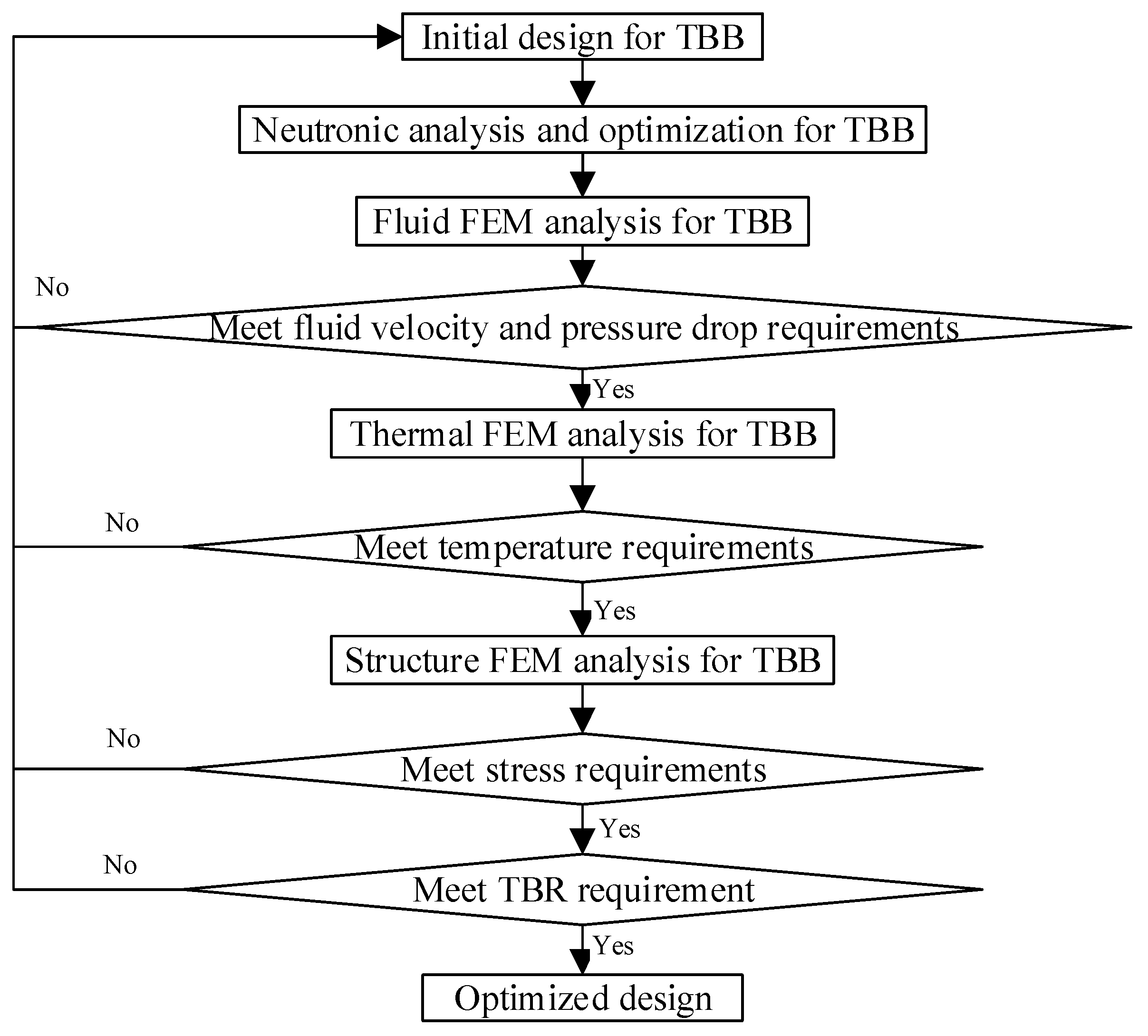
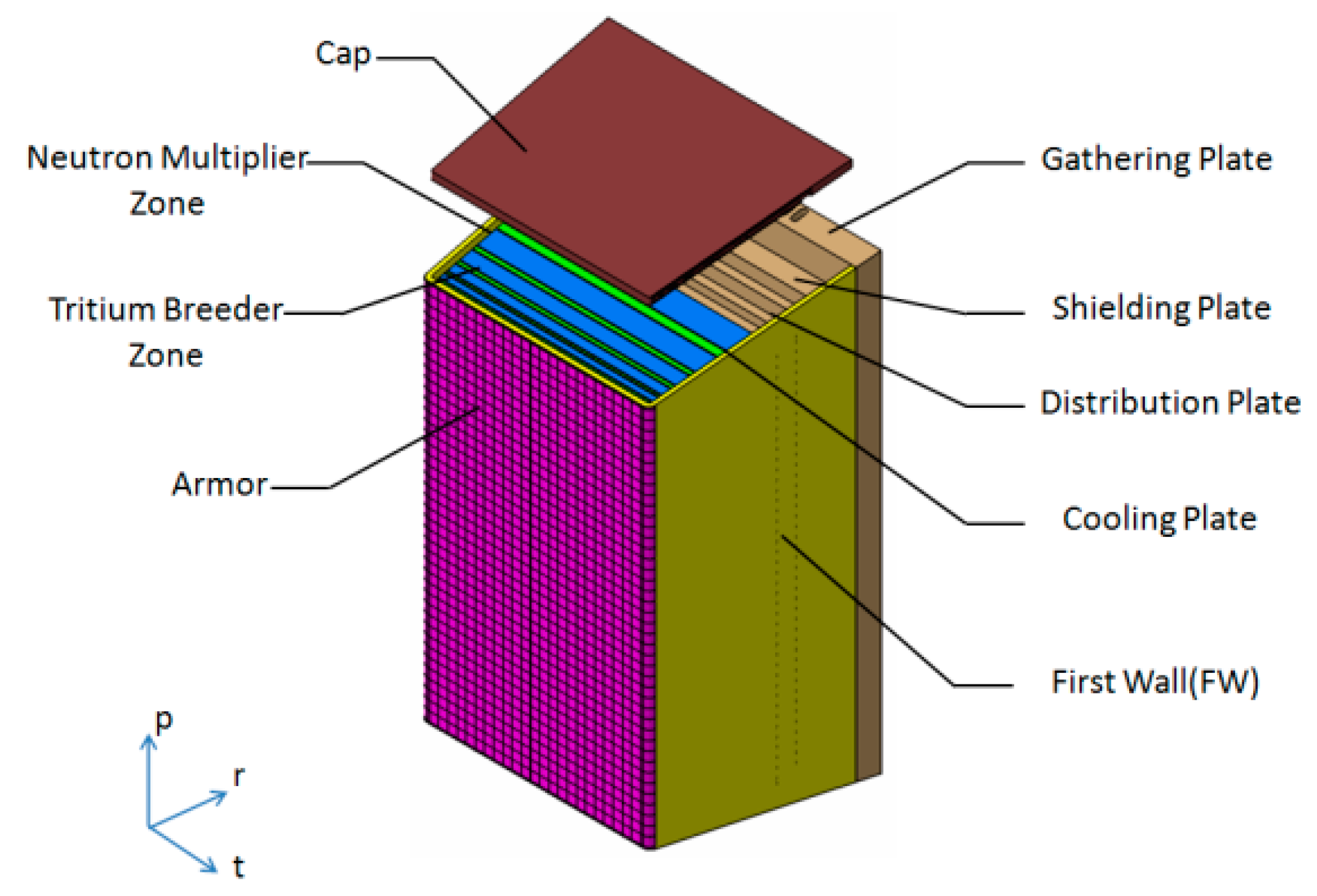
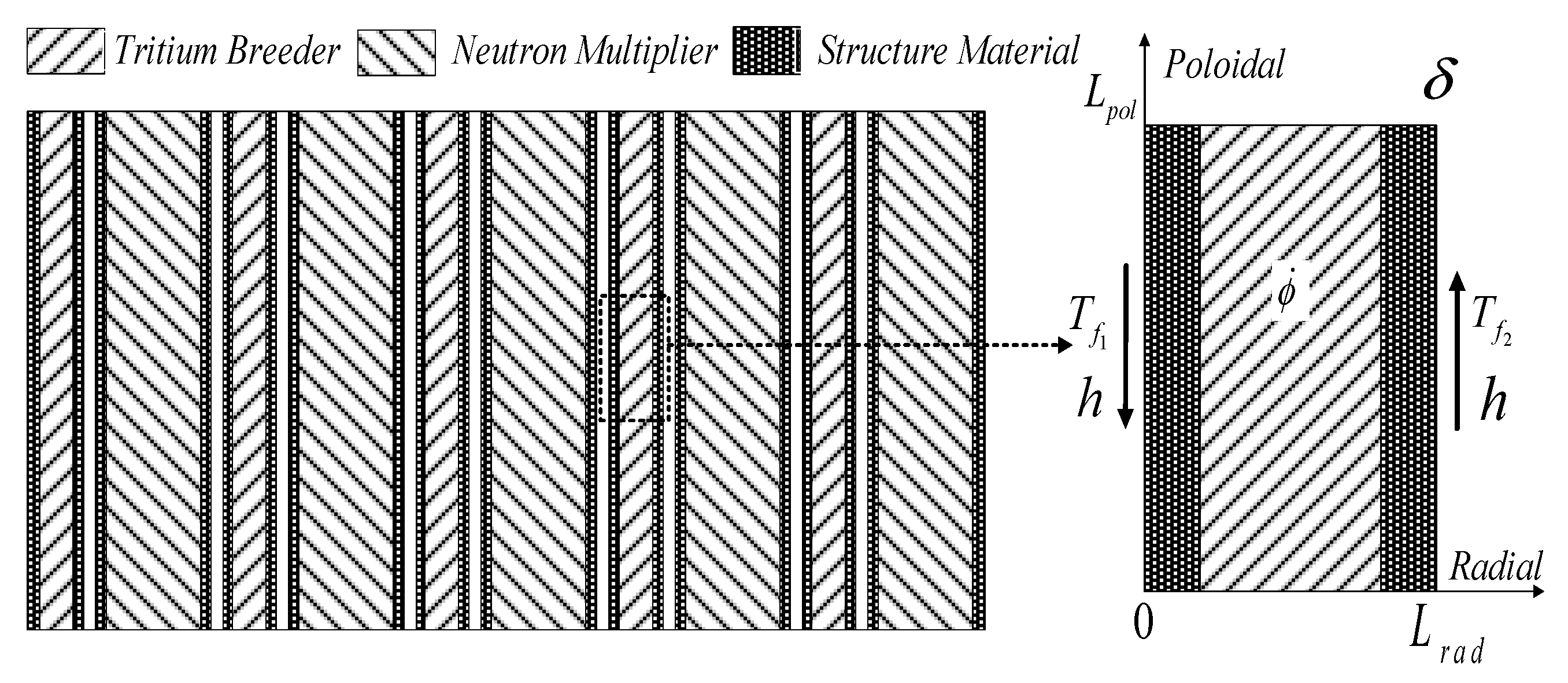
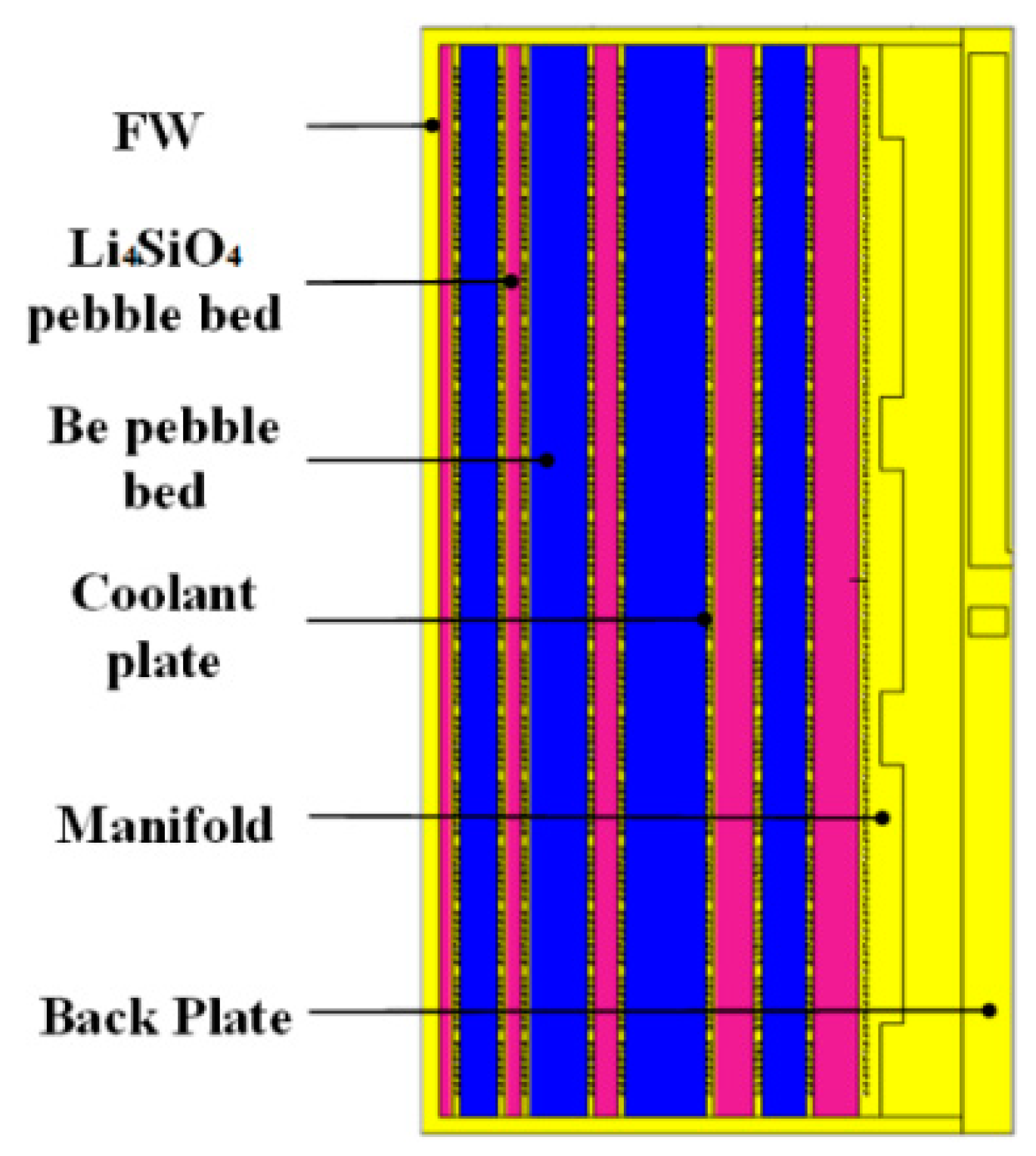
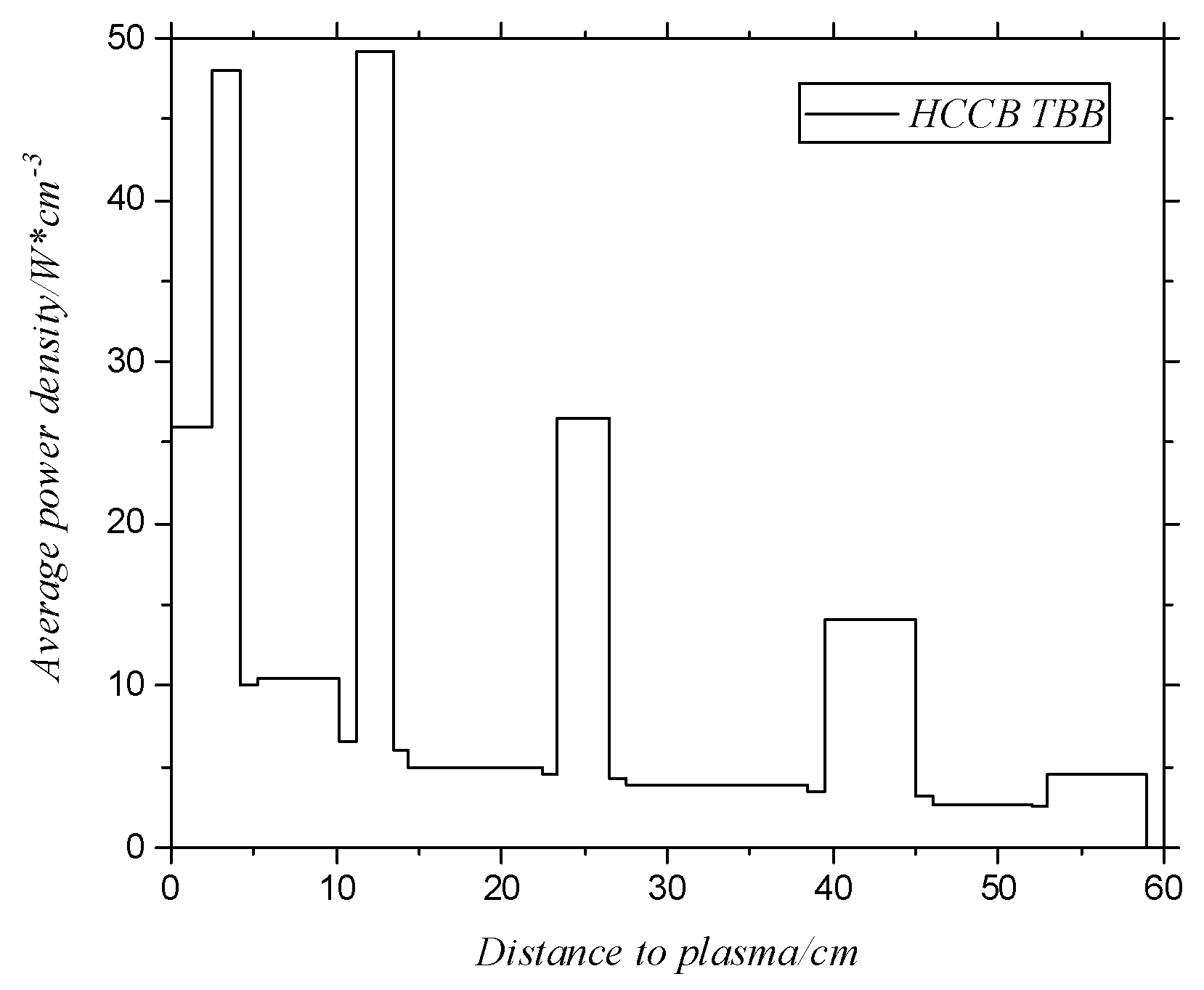



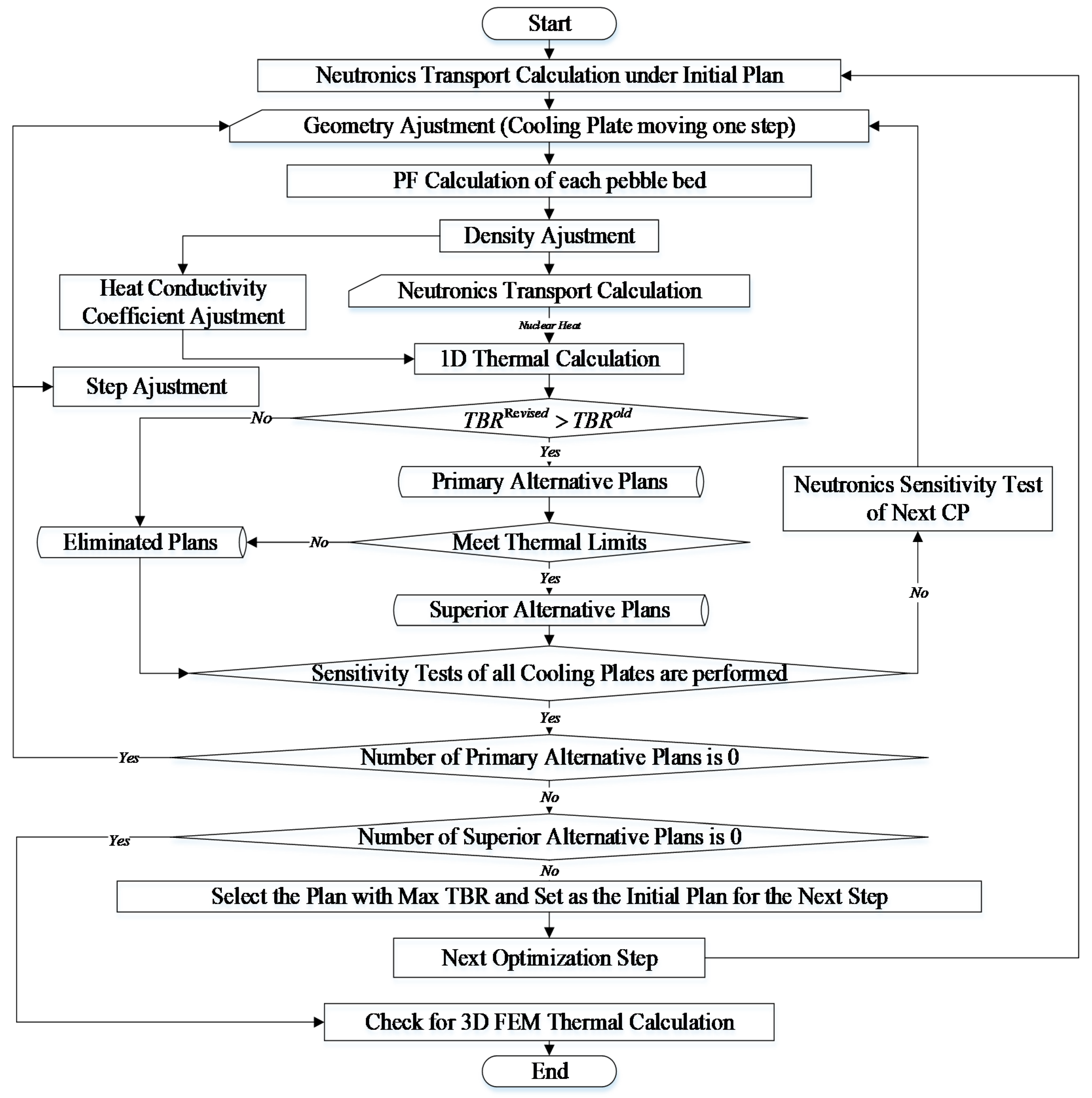
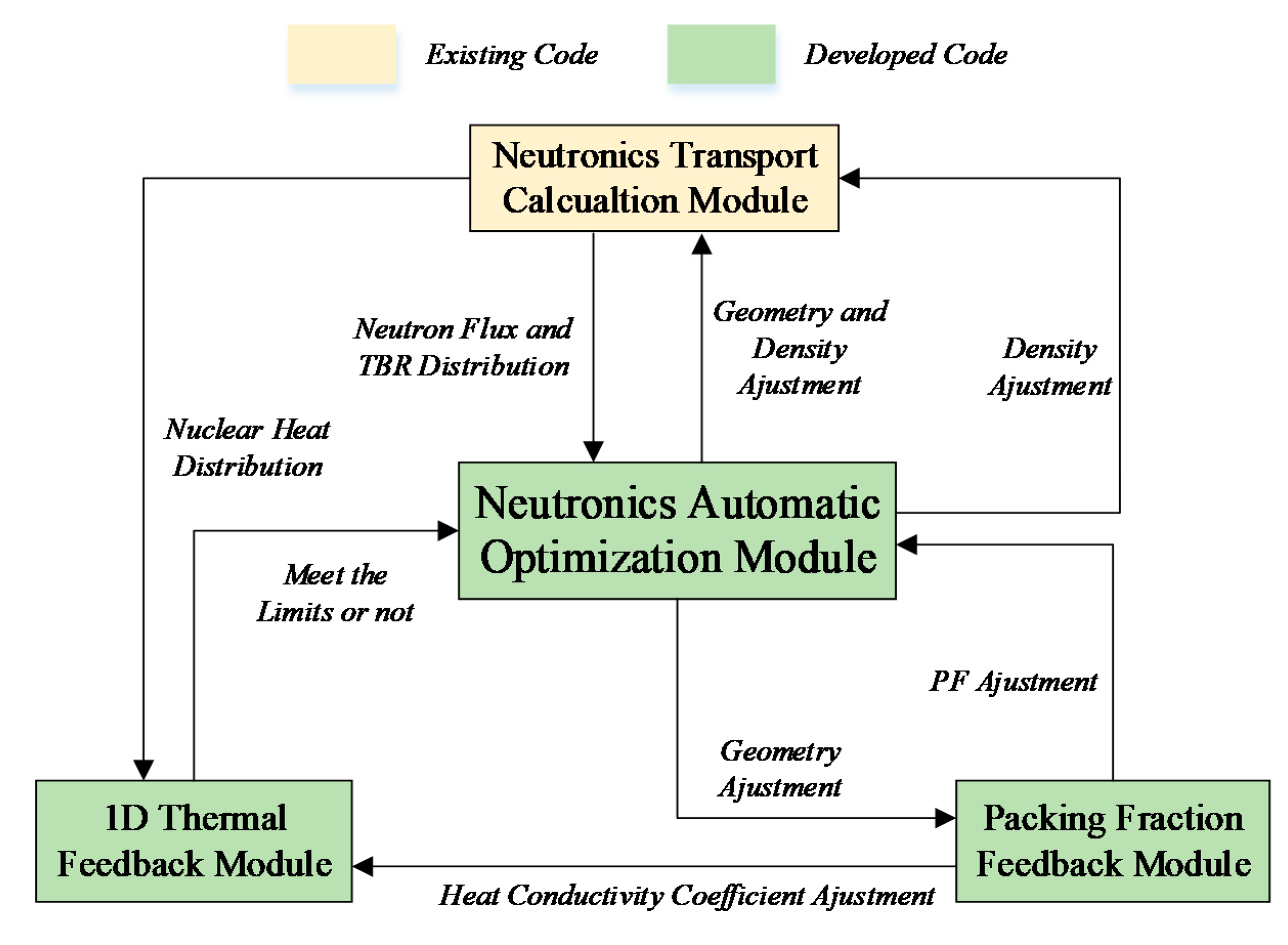
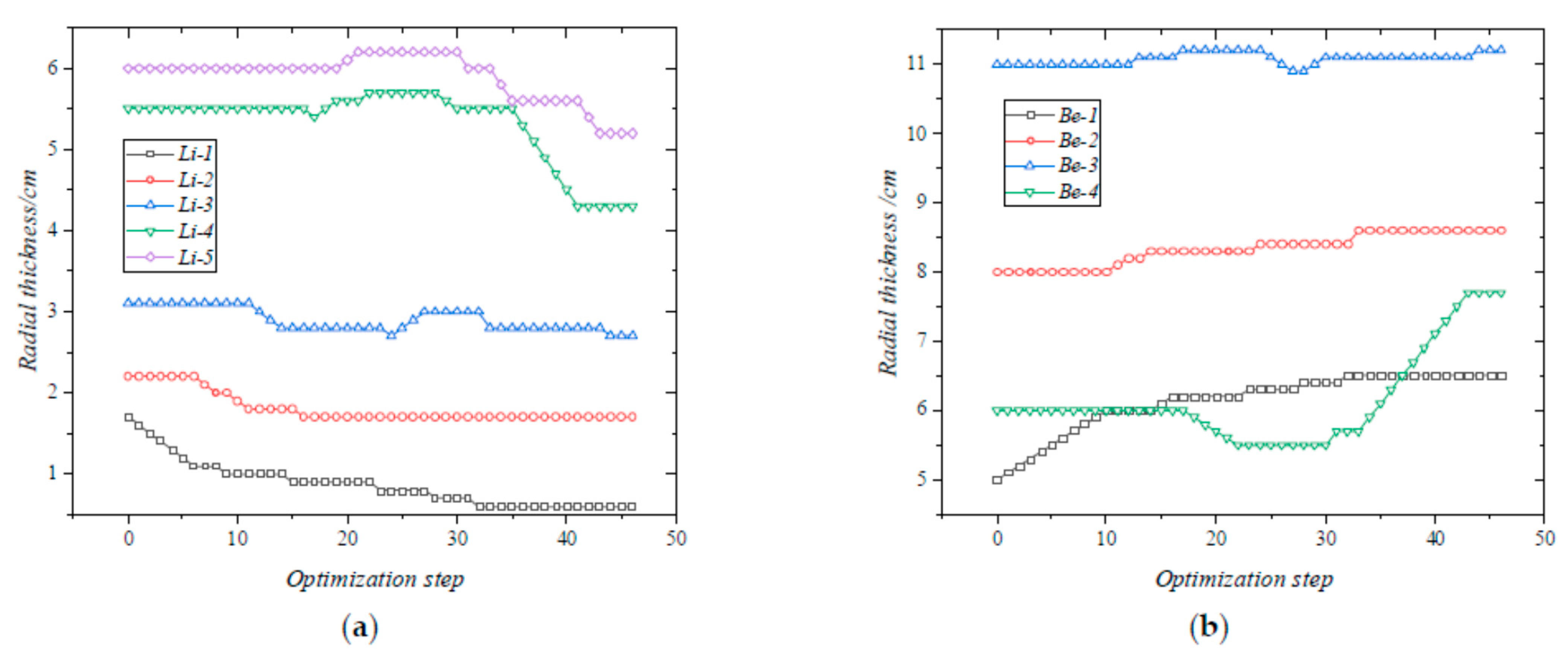


| Structure | Radial Length/cm | Structure | Radial Length/cm |
|---|---|---|---|
| FW | 2.5 | CP-5 | 1.0 |
| Li4SiO4-1 | 1.7 | Be-3 | 11.0 |
| CP-1 | 1.0 | CP-6 | 1.0 |
| Be-1 | 5.0 | Li4SiO4-4 | 5.5 |
| CP-2 | 1.0 | CP-7 | 1.0 |
| Li4SiO4-2 | 2.2 | Be-4 | 6.0 |
| CP-3 | 1.0 | CP-8 | 1.0 |
| Be-2 | 8.0 | Li4SiO4-5 | 6.0 |
| CP-4 | 1.0 | Manifold | 14.0 |
| Li4SiO4-3 | 3.1 | Back plate | 1.0 |
| Structure | Radial Length/cm | Structure | Radial Length/cm |
|---|---|---|---|
| FW | 2.5 | CP-5 | 1.0 |
| Li4SiO4-1 | 0.6 | Be-3 | 11.2 |
| CP-1 | 1.0 | CP-6 | 1.0 |
| Be-1 | 6.5 | Li4SiO4-4 | 4.3 |
| CP-2 | 1.0 | CP-7 | 1.0 |
| Li4SiO4-2 | 1.7 | Be-4 | 7.7 |
| CP-3 | 1.0 | CP-8 | 1.0 |
| Be-2 | 8.6 | Li4SiO4-5 | 5.2 |
| CP-4 | 1.0 | Manifold | 14.0 |
| Li4SiO4-3 | 2.7 | Back plate | 1.0 |
Publisher’s Note: MDPI stays neutral with regard to jurisdictional claims in published maps and institutional affiliations. |
© 2021 by the authors. Licensee MDPI, Basel, Switzerland. This article is an open access article distributed under the terms and conditions of the Creative Commons Attribution (CC BY) license (https://creativecommons.org/licenses/by/4.0/).
Share and Cite
Qu, S.; Cao, Q.; Duan, X.; Wang, X.; Wang, X. Study on Multiphysics Coupling and Automatic Neutronic Optimization for Solid Tritium Breeding Blanket of Fusion Reactor. Energies 2021, 14, 5442. https://doi.org/10.3390/en14175442
Qu S, Cao Q, Duan X, Wang X, Wang X. Study on Multiphysics Coupling and Automatic Neutronic Optimization for Solid Tritium Breeding Blanket of Fusion Reactor. Energies. 2021; 14(17):5442. https://doi.org/10.3390/en14175442
Chicago/Turabian StyleQu, Shen, Qixiang Cao, Xuru Duan, Xueren Wang, and Xiaoyu Wang. 2021. "Study on Multiphysics Coupling and Automatic Neutronic Optimization for Solid Tritium Breeding Blanket of Fusion Reactor" Energies 14, no. 17: 5442. https://doi.org/10.3390/en14175442






